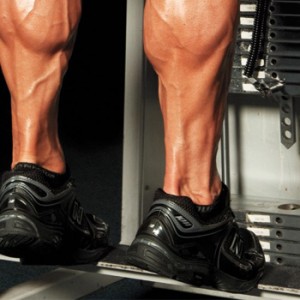Exercises
Useful articles
Decline Cable Fly is an effective isolated exercise for developing the chest muscles. Performing it in different variations, allows you to focus the workload on different parts of the pectoral muscles: the upper, lower, inner or lower part. There are several main variations of Decline Cable Fly: standing, lying on a bench, through the high or low pulleys. This article will focus on how to do all the variations of the exercise.
Benefits & Contraindications
Let’s look at the benefits of this exercise and then we will highlight the contraindications of its use.
Benefits
You can make a huge step in the development of the is anavar legal in the uk pectoral muscles when doing the Declined Cable Fly. This exercise is ideal to learn how to properly engage the pecs since the work is isolated in nature. The shoulders and triceps are practically turned off from the movement, which may not be the case with other chest exercises.
As a rule, the Declined Cable Fly is performed near the end of the chest workout to achieve a maximum pump. The workout is carried out in a large range of reps: from 12 and more. Working weight is not particularly important, as it is much more important to feel the stretching and contraction of the pectoral muscles.
Contraindications
It is not recommended to use the Declined Cable Fly if the athlete has the following ailments:
- brachial plexus neuritis;
- tendon bursitis;
- tendinopathy.
Too much stretching of the pectoral muscles at the lower point will strain the shoulder joints and ligaments which may lead to chronic pain. This is less true of the High Cable Chest Fly, but care should still be taken not to use excessively heavy working weights.
It is not recommended for beginners to use the Low Cable Chest Fly as this is a very difficult exercise in terms of technique. It’s best for a beginner to better develop the upper chest using the clenbuterol tablets for sale Incline Bench Press and Bench Dumbbell Fly exercises. When you notice an increase in muscle mass, then you can slowly start performing the Declined Cable Fly.
What Muscles Does the Declined Cable Fly Work?
Almost all the workload falls on the pectoral muscles, if you do everything correctly. Slight static tension is present in the biceps, triceps, and anterior deltoid muscle. But it should not prevent you from concentrating on the work of the chest. If you feel that the shoulders and triceps are tiring out more than the chest then you need to reduce the working weight and focus on technique.

How to Do the Declined Cable Fly?
Next, we will talk about the technique of performing several versions of the Declined Cable Fly.
High Cable Chest Fly
High Cable Chest Fly is performed as follows:
- Grasp the handles of the cable crossover and place your feet in a straight line. Try not to take a step forward, as this leads to a torque in the spine and can lead to injury.
- Lean forward, keeping your back straight. The stronger the slope, the more the upper chest will work. It is best to keep the slope at 45° throughout the set.
- Gently bring your hands together in front of you as you exhale. Try to make the movement only due to the work of the chest muscles (muscle mind connection). The shoulders and arms should not be engaged in the movement. The arms should be quite bent. Make a small pause at the point of peak contraction so you focus the load on the inner part (middle) of the chest.
- Spread your arms out to the sides slowly as you exhale. Stretch the outer part of the chest a little and do another repetition.
Low Cable Chest Fly
Low Cable Chest Fly with an emphasis on the upper chest is performed as follows:
- Grab the handles of the low pulleys and place your feet shoulder-width apart. The negative phase of the movement is not so important here. Stretching at the lower point of the amplitude is much less, so you do not need to try to “pull” the outer part of the chest.
- Push your chest slightly forward and up, and pull your shoulders back. This way you can take most of the load off your shoulders and concentrate on isolating the work onto the upper chest.
- As you inhale, start lifting your arms up and bringing them together in front of you. The movement should be smooth. Either way, do not strain your biceps, otherwise 90% of the load will fall on them. Hold for a second at the point of peak contraction to properly squeeze the chest muscles.
- As you inhale, gently lower your arms down, keeping the flex on the thoracic spine and not pushing your shoulders forward or up.
Decline Bench Cable Fly
The Decline Bench Cable Fly is performed as follows:
- Take the handles of the low pulleys and lie down on the bench. The bench should be positioned exactly between the handles. Position it so that the crossover cables are flush with the chest. You can use either a horizontal or inclined bench, or a bench with a negative slope. The greater the angle of inclination, the more the load will fall on the upper parts of the chest.
- Lower your shoulders down, bring your shoulder blades together and do not bend your lower back. If needed, you can put your feet on a bench or lift them into the air, so that you do not want to rest them on the floor and make it easier for yourself.
- Start to bring the handles above you. Externally, the exercise is similar to the Bench Dumbbell Fly, but only externally. Due to the cable crossover nature, resistance is created throughout the range of motion. Dumbbells don’t do that.
- Continue to bring your hands together until there is 5-10 cm between the handles. At this point, you need to pause for a second and tighten / flex your chest even more, focusing on the chest, not the biceps. You are doing everything right if at this point you begin to feel the muscles of your chest doing the work.
- Gently lower the handles. At the bottom point, take a short pause to properly stretch the muscle.
Alternative to the Decline Cable Fly
Working out with the cable crossover machine will give a very unique workout and workload experience which no exercise with a free weight will give you since one hundred percent of the load is constantly on the pectoral muscles during the entire set. If for some reason you are not satisfied with any of the variations of this exercise, then the only thing you can use as an alternative is the Pec Deck Butterfly. It is also a pulley machine, so the load will be almost the same. The only difference in the “Pec Deck” is the already set position. Therefore, it is almost impossible to vary the load and focus it on a particular part of the chest.
You can use the Rear Delt Fly Machine if your gym doesn’t have a Pec Deck Machine. In this case, sit with your back to the front of the machine so that the effect is the same as a Pec Deck Machine.
Thank! Your message has been sent successfully.












Questions and answers 0